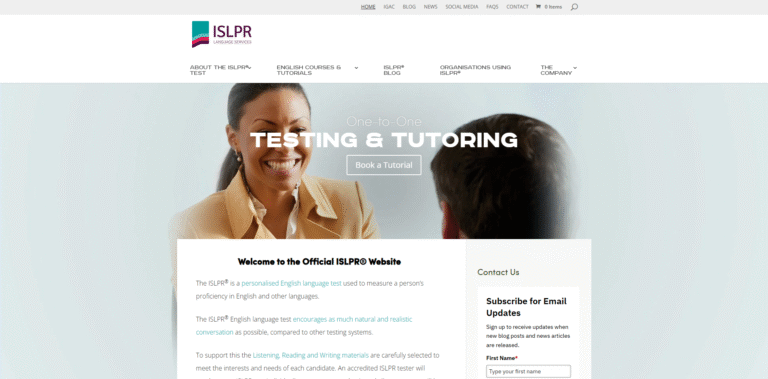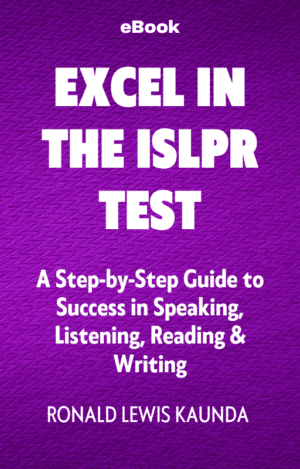Preparing for the ISLPR Writing Test requires more than a solid command of English grammar and vocabulary. You must also understand the range of ISLPR writing tasks you may be asked to perform, recognise the conventions each task type demands, and apply strategies to present your ideas clearly and persuasively.
Whether you are drafting a brief memo, an academic essay, or a formal policy proposal, knowing what examiners expect in the ISLPR writing tasks tasks will help you demonstrate your writing skills with confidence.
Below we explore the main types of ISLPR writing tasks, offer practical advice on how to tackle each one, and share best-practice tips to elevate your performance.
Throughout this article we have highlighted the key phrase ISLPR writing tasks so you can easily find this guide when searching online.
Why Familiarity with ISLPR Writing Tasks Matters
Examiners tailor writing prompts to suit your vocational background and educational needs. Tasks are not confined to one format and often overlap in purpose. What matters is clarity of structure, appropriateness of tone, and logical progression of ideas.
By understanding the variety of ISLPR writing tasks you might encounter, you can prepare templates, develop the right register and practice the language features that each task demands.
This preparation will allow you to allocate your exam time effectively and avoid last-minute confusion.
1 Article Writing
An article resembles pieces found in newspapers, journals or magazines. It requires a catchy introduction to engage readers followed by well-organised sections that develop a clear narrative or argument. You should:
- Begin with a headline style title that hints at your topic and draws interest
- Craft an opening paragraph that summarises the article’s focus and why it matters
- Use subheadings or clear paragraph breaks to guide the reader through your main points
- Conclude with a thought-provoking final paragraph that offers implications or recommendations
When practising article writing, read a variety of publications to note how professional writers integrate facts, statistics and anecdotes to maintain reader engagement.
2 Case for a Point of View
Writing a case involves presenting a reasoned argument in favour of an idea or proposal. You must convince your reader that your viewpoint is well grounded. A typical structure is:
- Introduction that states the proposition you are supporting
- Presentation of key arguments supported by evidence or examples
- Consideration of potential objections followed by rebuttalsA persuasive conclusion calling for action or endorsing the proposal
For example, if asked to present a case for a pay rise for teachers, you would include data on workload, comparisons with similar professions, and testimonials from educational experts. Practice by choosing topical issues in your field and drafting concise, evidence-driven arguments.
3 Essay Composition
An essay is a short, formal composition on a particular subject. It differs from other written forms in its focus on critical analysis and logical progression. To excel:
- Plan your essay with a brief outline noting introduction, body paragraphs and conclusion
- Ensure each paragraph has a clear topic sentence followed by supporting details
- Use transition words such as therefore, moreover and however to link ideas smoothly
- Avoid colloquial language and contractions unless the prompt explicitly invites a conversational tone
For test preparation, practice writing essays under timed conditions on a wide range of themes from education to environmental policy. This hones your ability to generate and organise ideas rapidly.
4 Handouts and Summaries
Handouts are materials designed to support presentations or group discussions. They may range from bullet-pointed lists to more discursive text, but the goal is to present information concisely. A good handout:
- Opens with a clear title and brief context statement
- Uses bullet points or numbered lists for key ideas, statistics or steps
- Includes simple diagrams or tables if they aid comprehension
- Ends with a summary of next steps or key takeaways
Similarly, summaries condense longer texts into their essential ideas. Practice by reading academic articles or reports and writing two or three sentence summaries that reflect the original tone and focus.
5 Letters and Memos
Letters and memos differ in formality and audience. Letters often follow traditional conventions: a salutation such as Dear Sir or Madam, body paragraphs that explain your purpose, and a closing formula such as Yours sincerely.
Memos are internal to an organisation, use a heading block including To, From, Date and Subject, and adopt a more direct style. Key tips include:
- Match your tone to the recipient: formal and polite for external letters, concise and focused for memos
- State your purpose upfront in the first paragraph
- Use clear language and short paragraphs to improve readability
- Conclude with a call to action or summary of next steps
Practical exercise: draft a letter to a local council requesting a community project, then convert it into a memo for internal staff.
6 Notes and Outlines
Notes are informal and designed for quick communication. Outlines present the skeleton of a longer argument, listing main ideas without full detail. While both are brief, their clarity is crucial:
- For notes, include recipient name at the top, few lines of text covering the message, and your signature
- For outlines, use numbering or bullet points to indicate main headings and subheadings
- Ensure the hierarchy of ideas is obvious so a reader can follow the logic at a glance
To practise, summarise meeting minutes in bullet points or outline a business proposal in ten lines.
7 Papers and Policy Documents
Papers and formal policy documents present research, arguments or recommendations on a topic. These require academic rigour:
- Start with an executive summary outlining purpose and key recommendations
- Provide background context and literature review if appropriate
- Present findings or arguments in structured sections with headings and subheadings
- Support claims with evidence, citations and clear reasoning
- End with a policy recommendation section providing actionable steps
Practice by selecting topics such as school uniform policies or workplace wellness programs and drafting mock policy papers that include rationale, evidence and implementation plans.
8 Proposals and Submissions
Proposals and submissions aim to convince decision makers of the merit of your suggestion. While similar to cases, they often include practical details such as resources, timelines and cost estimates. To excel:
- Open with an introduction that summarises the proposal and its benefits
- Detail the logistical plan including tasks, personnel, budget and schedule
- Present a benefits analysis showing return on investment or community impact
- Anticipate challenges and outline mitigation strategies
- Conclude with a clear call for approval or next steps
Draft proposals such as suggestions for new community programs or requests for funding in your practice sessions.
9 Summaries of Longer Documents
Summaries differ from outlines by providing a stand-alone text that captures essential ideas from a longer work. Your summary should:
- Begin with a statement of the original document’s title, author and purpose
- Present main arguments or findings in a logical order using paragraph format
- Use your own words to paraphrase and avoid copying entire sentences
- Remain concise, typically no more than one quarter of the original length
Practice summarising research articles or government reports to hone your ability to distil key points without losing nuance.
Bringing It All Together
Mastering ISLPR writing tasks involves both understanding the expected features of each genre and practising the language and structural conventions that make your writing clear and persuasive.
Begin by identifying which task types align most closely with your professional and educational background.
Develop templates for articles, cases and proposals and refine them through timed practice. Build a personal toolkit of transition phrases, formatting guides and vocabulary suited to formal and informal registers.
Finally, seek feedback from peers or tutors to ensure your writing meets the logical, appropriate and reader-friendly standards examiners look for.
By dedicating time to each of the main writing tasks you may face you will be well prepared to adapt to any prompt and demonstrate your English writing proficiency in the ISLPR Writing Test with confidence.









 Excel in the ISLPR Test
Excel in the ISLPR Test